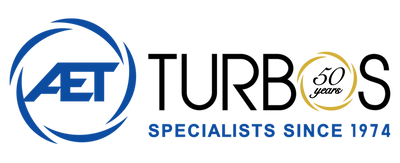Turbocharged Beginnings - an early history of the turbo
Since the invention of the internal combustion engine, mechanics, engineers and scientists have all been looking to develop ways to improve it.
In this post, we look at the early years of turbocharging, from the initial concepts surrounding forced injection, through to the early aviation applications, right up to the first turbocharged cars and automobiles.
The first steps
Early internal combustion pioneers Gottileb Daimler and Rudolf Diesel both explored the possibility of improving the power output of their engines through forced induction in the late 19th century. In fact, Diesel is credited with the invention of the first mechanical supercharger in 1896.
However, it wasn’t until the start of the 20th century that Dr. Alfred Buchi, a Swiss engineer, put forward the first plans for a supercharger driven by exhaust gases, and the turbo was born. In 1905, he patented the idea, and in 1915, whilst working as the Chief Engineer for the research wing of Sulzer Brothers, he built the first turbocharged diesel engine.
Unfortunately, the prototype didn’t work very well. The early technology wasn’t efficient enough to maintain the pressure needed to provide a real boost to performance.
Age of the aviators
General Electric had been producing supercharged engines since 1910, and began to test their first turbochargers in 1918. In that year, a member of their engineering department, Dr. Sandford Moss, took an engine to the top of Pike’s Peak, the highest mountain in Colorado, and successfully tested a turbocharger – managing to boost the power output from 350 horsepower to 356!
This was the real beginning of applied turbocharging, and in 1920, General Electric fitted a turbocharged engine to a biplane for an altitude test. Before then, planes had been significantly limited in terms of their altitude, because air pressure reduces the higher you go. The idea of turbocharging was to compensate for this, and the test was a success, enabling the plane to fly to an altitude of over 30,000 feet.
This started a huge boom in turbocharging, and by the mid 1920s, they were in widespread use across the aviation industry, as turbos also started to appear on engines for ships and trains for the first time. In 1925, Alfred Buchi, who had continued to refine his prototypes, successfully boosted engine output through turbocharging by 40%.
By WW2, the technology was integral to the design of planes, and was particularly useful in the development of high-altitude bombers, like the B17 flying fortress, which wouldn’t have had the power to remain at altitude without turbocharging.
The transition to automotive
 In 1938, a Swiss company called Schweizer Maschinenfabrik Saurer developed the first turbochargers for commercial diesel trucks, but they weren’t particularly successful, and it wasn’t until the 1960s that truck turbochargers became widespread
In 1938, a Swiss company called Schweizer Maschinenfabrik Saurer developed the first turbochargers for commercial diesel trucks, but they weren’t particularly successful, and it wasn’t until the 1960s that truck turbochargers became widespread
Throughout the 1950s, turbocharging technology was developed and refined further, which led to turbos being utilised more and more on heavy commercial vehicles like excavators, bulldozers and earthmovers.
In 1962, the first turbocharged passenger vehicle was launched – the 1962 Oldsmobile Jetfire V8, which was fitted with a Garrett-AiResearch T5 turbo. This was quickly followed by its first competitor, the Chevrolet Corvair Monza.
Unfortunately, both vehicles featured overly complicated turbocharging systems and were hugely unreliable. In fact, Oldsmobile ended up offering a heavily subsidised programme to its customers where it would replace the turbocharged engine with a naturally aspirated one!
Whilst neither vehicle was a commercial success, due to widespread problems with reliability and lacklustre performance, these pioneering vehicles paved the way for the automotive turbochargers we see today.
The turbo revolution had begun…
How we can help
Whilst AET wasn’t around when the turbo was invented, we do have loads of experience – in fact, we’ve been at the forefront of turbocharging technology for over 40 years.
With experienced, highly-trained team members, we can deliver a full range of high quality, competitively priced repairs, replacements and turbo sales, and offer bespoke advice and tailored support for all your turbo needs.
Get in touch today on 01924 588 266, or email info@aet-turbos.co.uk for further information on any of our services.
B 52 Flying Fortress image by David Merrett
Chevrolet Corvair Monza image by Robert Spinello



Leave a comment